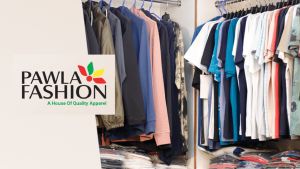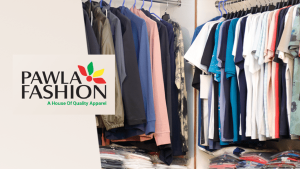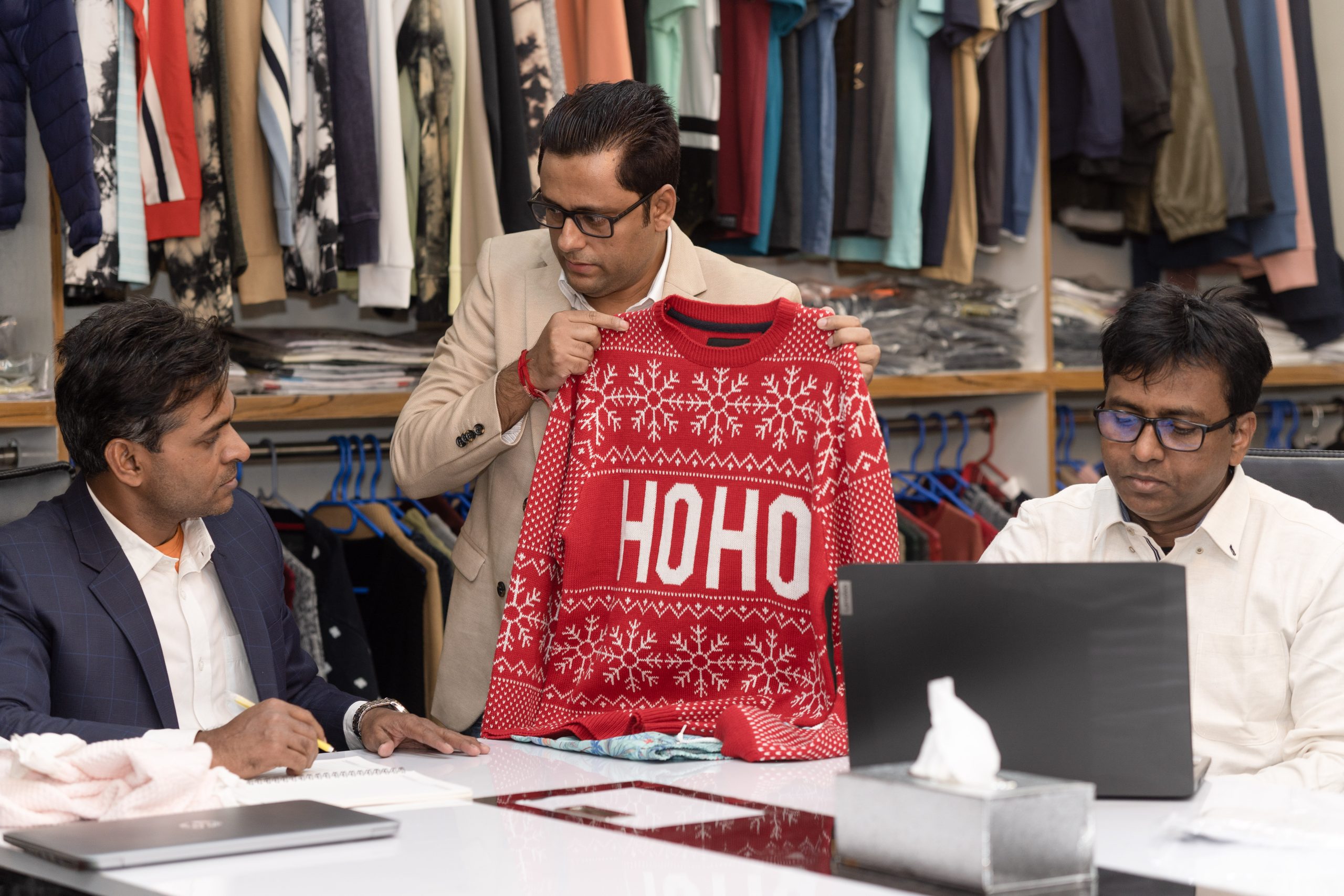The Impact of Bangladeshi Ready-Made Garments on the Global Fashion Industry
- Cost-Effective Production: Bangladesh’s ready-made garments (RMG) sector offers competitive pricing, enabling global brands to produce high-quality fashion at lower costs, thus increasing their profit margins.
- Significant Export Contribution: The RMG industry is a major export earner for Bangladesh, accounting for a substantial portion of the country’s GDP and supporting economic growth and development.
- Global Supply Chain Integration: Bangladeshi garment factories are deeply integrated into the global supply chain, supplying apparel to numerous international fashion brands and retailers.
- Employment Generation: The RMG sector in Bangladesh provides employment to millions, particularly women, fostering socio-economic development and gender empowerment.
- Sustainability Initiatives: Many Bangladeshi garment factories are adopting green practices and sustainability certifications, setting new standards in eco-friendly production for the global fashion industry.
- Fashion Innovation: Bangladeshi manufacturers are increasingly investing in technology and innovation, enhancing their capability to produce diverse and sophisticated fashion items that meet global standards.
- Global Fashion Trends: The RMG industry in Bangladesh plays a pivotal role in shaping global fashion trends by enabling quick turnaround times for fast fashion, thus influencing consumer behavior and market dynamics.
From the bustling streets of Dhaka to the runways of Paris, Bangladeshi ready-made garments have revolutionized the global fashion industry. With their affordable prices and high-quality craftsmanship, these garments have become a staple in closets around the world. Join us as we delve into the impact that Bangladeshi ready-made garments have had on shaping trends, creating opportunities for local artisans, and sparking conversations about sustainability in fashion. Get ready to be inspired by the power of Bangladesh’s fashion industry on a global scale!
Introduction to the Bangladeshi Ready-Made Garment Industry: The Bangladeshi ready-made garment industry has emerged as a major player in the global fashion industry, with its products being sold all over the world. It is currently the second-largest exporter of ready-made garments (RMG) after China and accounts for 80% of Bangladesh’s total exports.
The beginnings of this industry can be traced back to the early 1970s when Bangladesh gained independence from Pakistan. The country was struggling economically, and there was a need for an industry that could generate employment and boost the economy. With government support and investment from foreign countries, the RMG sector began to take shape.
Initially, the focus was on producing basic clothing items such as t-shirts, shirts, and trousers for export to Western markets. However, over time, the industry has evolved and expanded into producing a wide range of fashion apparel for men, women, and children. One of the key factors contributing to the success of Bangladesh’s RMG industry is its cheap labor force. The country has a large population with a high percentage of young workers who are willing to work for low wages. This makes production costs significantly lower compared to other countries. Additionally, favorable trade policies and duty-free access to major markets like Europe and North America have also played a crucial role in boosting exports.
The growth of this industry has had a significant impact on Bangladesh’s economy by providing employment opportunities for millions of people – mostly women from rural areas who were previously unemployed or underemployed. Today, it is estimated that around four million people are employed in this sector across more than 4,000 garment factories in Bangladesh.
However, along with its successes come challenges that cannot be ignored. The fast-paced demands of international retailers often lead to harsh working conditions in these factories where workers face long hours without proper breaks or safety measures. In recent years there have been numerous reports highlighting concerns about worker exploitation and poor working conditions in garment factories in Bangladesh. Despite these challenges, the Bangladeshi RMG industry continues to grow and make a significant impact on the global fashion industry. Its products are highly sought after for their affordability and quality, making it an integral part of many major retail brands’ supply chains. In the next section, we will explore in detail the influence of this industry on global fashion trends and its potential for future growth.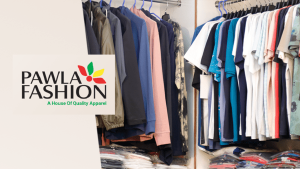
History and Evolution of the Industry: The history and evolution of the garment industry in Bangladesh can be traced back to the 1970s when it was primarily an agricultural-based economy. However, with the introduction of a liberalized economic policy in the early 1980s, the country saw a major shift towards industrialization and export-oriented industries.
One of the key factors that contributed to the growth of Bangladesh was its low labor cost. This attracted international brands and retailers looking for cheaper manufacturing options. In addition, favorable government policies such as tax exemptions and duty-free access to the Wt industry in Bangestern markets also played a significant role in attracting foreign investments.
The first ready-made garment (RMG) factory in Bangladesh, Desh Garments Ltd., was established in 1977 by local entrepreneurs. It mainly produced basic garments such as t-shirts, polo shirts, and undergarments for export to Europe. However, it wasn’t until the early 1980s that there was a significant increase in demand for Bangladeshi RMG products from international buyers. The industry experienced rapid growth during this time period, with hundreds of new factories being set up across the country. By 1991, exports from the garment sector surpassed traditional export items like jute and tea to become Bangladesh’s largest source of foreign exchange earnings. One major turning point for the Bangladeshi RMG industry came in the early 2000s when several international trade agreements were signed between developed countries and Least Developed Countries (LDCs), including Bangladesh. These agreements granted duty-free access to LDC products in developed countries’ markets, providing a huge advantage for Bangladeshi exporters. As a result, Bangladesh became one of the top suppliers of RMG products globally, overtaking competitors like India and China. The industry continued to grow at an impressive rate over the next decade; however, it faced some challenges along with its success.
In recent years, the industry has been marred by incidents such as factory fires and building collapses, which have raised concerns about worker safety and labor practices in the country. The tragic collapse of the Rana Plaza building in 2013, resulting in the death of over 1,100 workers, brought international attention to these issues and prompted major brands to take action to improve working conditions. Despite these challenges, the Bangladeshi RMG industry remains a vital part of the country’s economy. It employs millions of people, mostly women from rural areas who have limited job opportunities. Furthermore, it has also played a significant role in elevating Bangladesh’s position on the global fashion map and contributing to its economic growth.
Impact on the Global Fashion Industry: The Bangladeshi ready-made garment industry has had a significant impact on the global fashion industry. Bangladesh is currently the second largest exporter of ready-made garments in the world, just behind China. The country’s garment exports have grown from $31 million in 1980 to over $34 billion in 2019, making it a major player in the global fashion market. One of the biggest impacts of Bangladeshi ready-made garments on the global fashion industry is its low-cost production. Due to cheap labor and minimal regulations, Bangladesh is able to produce garments at a much lower cost compared to other countries. This has made it an attractive destination for many international brands looking to cut down their production costs. As a result, more and more companies are sourcing their clothing from Bangladesh, which has led to an increase in its share of the global fashion market. However, this low-cost production also brings ethical concerns as most workers in Bangladeshi garment factories are paid very low wages and work under unsafe conditions. This has sparked widespread criticism and calls for better working conditions and fair wages for these workers. In response, some international brands have taken steps to improve working conditions and increase wages for their suppliers’ workers in Bangladesh.
Moreover, Bangladeshi ready-made garments have also played a major role in shaping fast fashion trends around the world. Fast fashion refers to inexpensive clothing that is produced quickly and follows current trends closely. With its ability to produce large quantities of clothes at a rapid pace, Bangladesh has become a hub for fast fashion retailers like Zara, H&M, and Forever 21. These companies are able to quickly churn out new styles based on consumer demand due to Bangladesh’s efficient production processes. However, this fast-paced nature of producing clothes comes at a cost – excessive consumption leads to environmental damage. The constant demand for cheap clothing results in overproduction and waste that ultimately ends up polluting our environment. This has sparked a global movement towards sustainable fashion, encouraging consumers to be more mindful of their clothing choices and the impact it has on the environment. The Bangladeshi ready-made garment industry has had a significant impact on the global fashion industry in terms of production costs, fast fashion trends, and ethical concerns. As this industry continues to grow and evolve, it is important for all stakeholders – from brands to consumers – to consider its impact and work towards creating a more sustainable and ethical fashion industry.
Positive Effects: Economic Growth and Employment Opportunities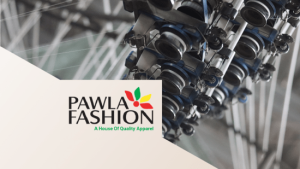
The Bangladeshi ready-made garment (RMG) industry has undoubtedly played a major role in the economic growth of Bangladesh. The country’s RMG sector is currently the second-largest exporter in the world, accounting for over 80% of its total exports and contributing significantly to its GDP. With an annual growth rate of 8%, this industry has become a crucial driver of economic development in Bangladesh. One of the most significant positive effects of the RMG industry on Bangladesh’s economy is the creation of employment opportunities. This sector employs over 4 million workers, mostly women from rural areas, making it one of the largest sources of employment in the country. These jobs have provided women with financial independence and improved their socio-economic status, leading to greater gender equality and empowerment.
Moreover, as these jobs require low skills and minimal education qualifications, they have opened up opportunities for those who may not have access to higher education or technical training. This has enabled individuals from disadvantaged backgrounds to find stable employment and support their families. The impact goes beyond just job creation; it also leads to a ripple effect on other industries such as transport, logistics, packaging, retail, and services. The growth of these supporting industries further contributes to job creation and boosts economic activity in Bangladesh. Additionally, with increased production and exportation comes foreign investment into the country’s infrastructure development and technology advancement. This creates a more conducive environment for businesses to operate efficiently while also providing an opportunity for local suppliers to grow alongside these factories.
Furthermore, there is evidence that suggests that working conditions in RMG factories have improved over time due to pressure from international buyers’ social compliance standards. This means better wages, safer working conditions, and improved workers’ rights – all contributing positively to improving living standards for employees within this industry. It is evident that the Bangladeshi RMG industry has had a profound impact on both economic growth and employment opportunities within the country. Not only has it significantly contributed to Bangladesh’s GDP, but it has also provided millions of jobs, especially for women and those from disadvantaged backgrounds. With its continued growth, this industry will continue to play a crucial role in driving economic development and creating employment opportunities for many more years to come.
Negative Effects: Labor Exploitation and Environmental Concerns
The ready-made garment industry in Bangladesh has undeniably brought about significant economic growth and job opportunities for the country. However, it has also been plagued by various negative effects, particularly in terms of labor exploitation and environmental concerns. One of the most alarming issues surrounding the Bangladeshi ready-made garment industry is the exploitation of laborers. The majority of workers in this sector are women from rural areas who come to cities seeking employment opportunities. These workers often face long working hours, poor working conditions, and low wages. In fact, reports have shown that many factories do not comply with basic labor laws and fail to provide safe and healthy working environments for their employees. According to a report published by Human Rights Watch in 2019, some factory workers in Bangladesh work up to 14 hours a day with only one day off per week. They are also subjected to physical and verbal abuse from their supervisors. Moreover, child labor remains an issue despite efforts made by the government to combat it. Many children as young as 10 years old are forced into work due to poverty and lack of education opportunities. Aside from labor exploitation, the ready-made garment industry in Bangladesh also poses significant environmental concerns. The production process involves extensive use of water, energy, chemicals, and other resources which contribute to pollution and waste generation. This can have detrimental effects on local communities’ health and livelihoods.
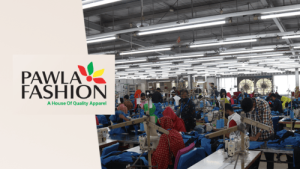 Furthermore, many factories do not have proper waste management systems in place which leads to untreated wastewater being dumped into rivers or landfills without any treatment. This contributes to water pollution which affects not only human health but also aquatic life. Moreover, textile dyes used in the production process contain toxic chemicals that can be harmful if released into the environment without proper treatment. The disposal of these chemicals can cause soil contamination which can affect agricultural productivity.
Furthermore, many factories do not have proper waste management systems in place which leads to untreated wastewater being dumped into rivers or landfills without any treatment. This contributes to water pollution which affects not only human health but also aquatic life. Moreover, textile dyes used in the production process contain toxic chemicals that can be harmful if released into the environment without proper treatment. The disposal of these chemicals can cause soil contamination which can affect agricultural productivity.
In addition to environmental concerns within Bangladesh itself, there are global implications as well. As consumers demand more affordable and trendy clothing, the fast fashion industry has grown exponentially. This leads to an increase in production in countries like Bangladesh where labor and environmental regulations are not as strictly enforced. While the ready-made garment industry in Bangladesh has brought economic growth and employment opportunities, it also comes with significant negative effects. Labor exploitation and environmental concerns must be addressed by all stakeholders involved to ensure a sustainable and ethical fashion industry for both local communities and the global market.
Steps Taken to Address Issues in the Industry: The ready-made garment industry in Bangladesh has been faced with a number of issues over the years, ranging from poor working conditions to environmental concerns. These issues have not only affected the workers and the environment but also the global fashion industry as a whole. In this section, we will explore some of the steps that have been taken to address these issues and their impact on the industry.
The first and most crucial step taken to address issues in the Bangladeshi ready-made garment industry was the formation of The Accord on Fire and Building Safety in Bangladesh in 2013. This legally binding agreement between brands, retailers, trade unions, and NGOs aimed to improve working conditions and safety standards in garment factories. It required signatories to conduct safety inspections, provide training for workers, and financially support any necessary renovations or improvements.
Another significant step was the adoption of The Alliance for Bangladesh Worker Safety by North American apparel companies in 2013. Similar to The Accord, this program focused on improving factory safety through inspections, training programs for workers, and remediation efforts. In addition to these initiatives led by international organizations and brands, there have been efforts made within Bangladesh itself to address issues in the industry. The government has implemented labor laws that set minimum wages for workers and ensure their right to form unions. However, enforcement of these laws remains a challenge. The creation of Fair Trade certification systems has also played a role in addressing issues within the industry. This system provides fair wages for workers along with social premiums that support community development projects such as education programs or healthcare facilities.
Furthermore, sustainable fashion movements have gained traction globally which has led to an increase in demand for ethical production practices. As a result, many brands are now taking steps towards transparency in their supply chains and ensuring fair treatment of workers. While these initiatives have undoubtedly brought about positive change within the Bangladeshi ready-made garment industry, challenges still remain. Implementation of policies and enforcement of laws have been slow, and there is still room for improvement in terms of worker rights and environmental sustainability. The steps taken to address issues in the industry have made a significant impact on improving working conditions and safety standards in Bangladeshi garment factories. However, it will require continued efforts from all stakeholders to ensure that these improvements are sustained and further progress is made towards a more ethical and sustainable industry.
Future Outlook and Challenges Ahead
Future Outlook: The future of the Bangladeshi ready-made garments industry looks promising as it continues to be a major player in the global fashion industry. It has already established its position and is expected to further expand in the coming years. The recent increase in demand for sustainable and ethical clothing has opened doors for Bangladeshi manufacturers to produce eco-friendly and socially responsible garments, which can give them an edge over competitors. With the government’s support and initiatives such as the Sustainable Apparel Forum, Bangladesh is taking steps toward becoming a leader in sustainable fashion. Another factor contributing to the positive outlook is Bangladesh’s young workforce. With an average age of 25 years, the country has a large pool of skilled labor that can cater to the growing demands of fast fashion brands. The government is also investing in skill development programs to enhance workers’ skills and productivity.
Challenges Ahead: While there are many opportunities for growth, Bangladesh’s ready-made garment industry also faces some challenges that need to be addressed for sustained success. One major concern is workplace safety and worker rights violations. The Rana Plaza tragedy in 2013 shed light on these issues, leading to reforms in labor laws and regulations. However, there is still room for improvement, especially when it comes to enforcing these laws effectively.
Moreover, with increasing competition from other low-cost manufacturing countries like Vietnam and Cambodia, Bangladesh needs to focus on diversifying its product range and moving towards higher value-added products. This will require continuous investment in technology upgrades and innovation. Another challenge faced by the Bangladeshi garment industry is its heavy reliance on exports to a few key markets like Europe and North America. This makes it vulnerable to changes or disruptions in those markets’ demand or policies. Therefore, expanding into new markets should be a priority for sustaining growth.
Furthermore, with rising concerns about environmental sustainability within the fashion industry, implementing more sustainable practices will become crucial for Bangladeshi manufacturers. This includes reducing water and energy consumption, minimizing waste, and using eco-friendly materials. While some brands have taken steps in this direction, there is still a long way to go for the industry as a whole.
Conclusion: The Bangladeshi ready-made garment industry has made significant progress in the global fashion market and has a promising future ahead. However, it also faces several challenges that need to be addressed to ensure sustainable growth. By addressing these challenges and embracing innovation and sustainability, Bangladesh can continue to make its mark in the global fashion industry.
The fashion industry has a significant impact on the global economy, with countries like Bangladesh playing a crucial role in producing ready-made garments for major fashion brands. However, as we have explored in this article.

